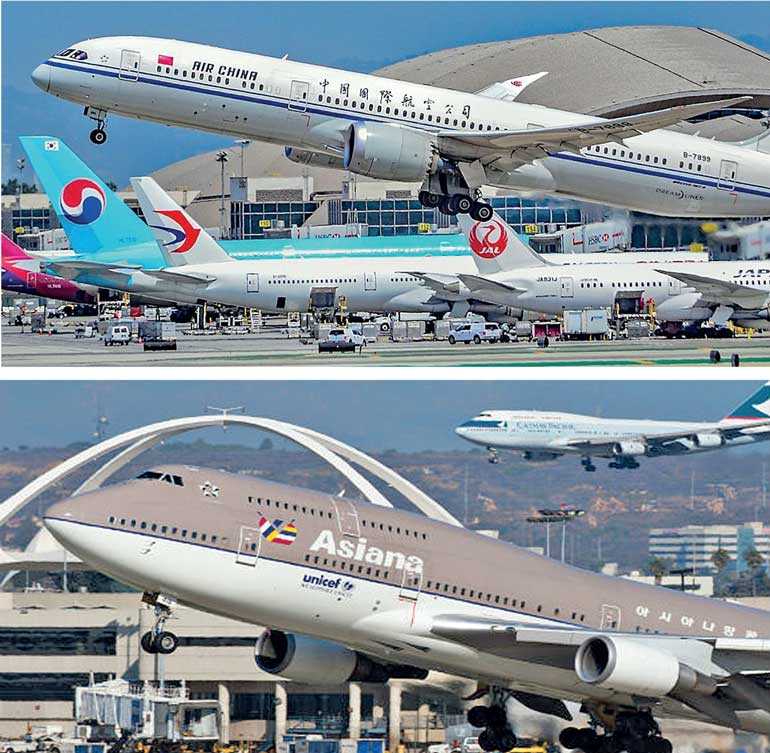Friday Dec 19, 2025
Friday Dec 19, 2025
Wednesday, 16 May 2018 00:00 - - {{hitsCtrl.values.hits}}
 IATA’s global passenger traffic results for March 2018 show that demand (measured in revenue passenger kilometers, or RPKs) rose 9.5%, compared to the same month a year ago, the fastest pace in 12 months.
IATA’s global passenger traffic results for March 2018 show that demand (measured in revenue passenger kilometers, or RPKs) rose 9.5%, compared to the same month a year ago, the fastest pace in 12 months.
Capacity (available seat kilometers, or ASKs) grew 6.4% and load factor climbed 2.3 percentage points to 82.4%, which set a record for the month, following on the record set in February. All regions except for the Middle East posted record load factors.
“Demand for air travel remains strong, supported by the comparatively healthy economic backdrop and business confidence levels. But rising cost inputs—particularly fuel prices—suggest that any demand boosts from lower fares will moderate going into the second quarter,” said Alexandre de Juniac, IATA’s Director General and CEO.
March international passenger demand rose 10.6% compared to March 2017, which was up from 7.4% year-on-year growth recorded in February. All regions showed strong increases. Total capacity climbed 6.6%, and load factor improved 2.9 percentage points to 81.5%.
Asia Pacific airlines’ traffic soared 11.6% in March, compared to the year-ago period. Passenger traffic is continuing to trend upwards, supported by strong regional economic growth and ongoing expansion in the number of airport-pair options for travelers. Capacity increased 8.2%, and load factor rose 2.5 percentage points to 80.9%.
European carriers saw March traffic climb 9.8% over March 2017, up from 6.9% annual growth in February. Business confidence in the most-open countries in the region has been hit by trade tensions in recent months, but economic conditions remain broadly supportive. As with Asia-Pacific region, demand is also being stimulated by increases in the number of nonstop airport-pairs. March capacity rose 6.4% and load factor was up 2.6 percentage points to 84.6%, highest among regions.
Middle East carriers’ traffic jumped 10.7% in March, much improved from the 4.1% year-over-year increase recorded in February. This reflects healthy growth in the market between the Middle East and Asia. Demand also shows signs of stabilization on Middle East to North America routes, following the disruption caused in the first half of 2017 by the now-lifted ban on large portable electronic devices, as well as a wider impact stemming from the proposed travel restrictions to the US. Capacity increased 4.3%, and load factor jumped 4.4 percentage points to 76.7%.
North American airlines posted a 9.5% traffic rise in March compared to the year-ago period, well above the 5-year average growth rate of 3.6%. Capacity climbed 4.9% and load factor was up 3.5 percentage points to 83.5%, which was the second highest among the regions. The weakening US dollar is having a positive effect on inbound traffic, while the comparatively robust domestic economic backdrop is supporting outbound demand.
Latin American airlines had an 11.8% increase in March traffic, which was the largest increase among the regions for a third month in a row. March capacity climbed 10.0% compared to a year ago, and load factor edged up 1.3 percentage points to 81.8%. Traffic continues to recover from the disruptions caused by the harsh hurricane season in the third quarter of 2017, driven in part by economic recovery in Brazil.
African airlines continued to enjoy very strong demand as well, with traffic up 11.2% compared to March 2017, which was more than twice the 5-year average pace of 4.8%. Airlines here are seeing healthy growth on routes to/from Europe and Asia, while the region’s two largest economies—Nigeria and South Africa—continue to improve. Capacity climbed 6.7%, and load factor strengthened 2.9 percentage points to 71.0%.
“The strong first quarter provides healthy momentum heading into the peak travel period in the Northern Hemisphere. Benign economic conditions are supporting—and being supported by—good demand for air travel. It’s a mutually-beneficial effect that smart governments recognize and encourage, by embracing affordable, quality aviation infrastructure and reasonable commercial regulation. But we need to deliver that message every day. The setback to modernizing air traffic management in the US, and a proposal to stop construction of the new airport in Mexico, are reminders of that fact,” said de Juniac.